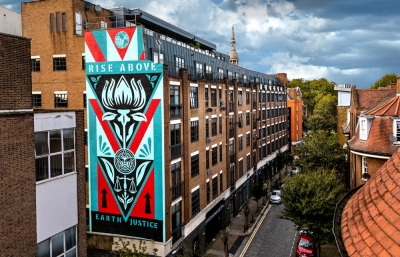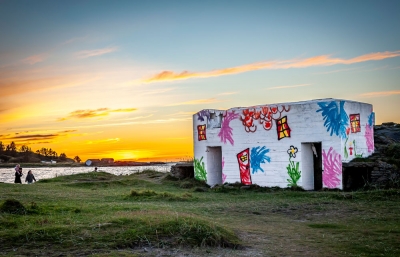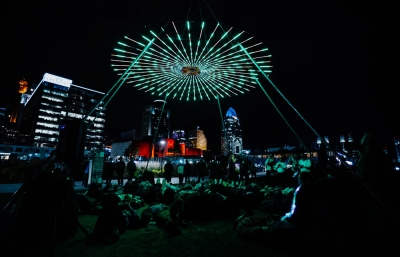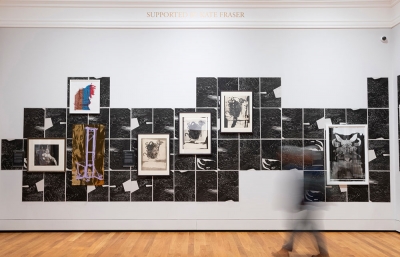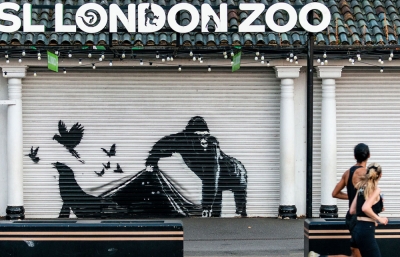"I'm writing this one day after Maradona's death," Nicolas Romero wrote to us a few weeks ago when we invited him to share his 2020 experience for our ongoing Art in Uncertain Times series. "I always talked with my colleagues about this hypothetical situation, about what would happen when El Diego left. Perhaps what I never imagined is that I would be watching the funeral of a myth from my computer on a rainy November day, while sitting on the sofa in my house in Madrid, 15,000km away from Buenos Aires."
As we continue battling the waves of Covid-19 we're still reaching out, interested in the ways this scenario has influenced life and work around the world, in this case, for Nicolas Romero whose trip to Madrid back in Feb 2020 turned out to be literally life-changing. "This adventure begins at the end of February when I was invited by the Urvanity Art fair to paint in during art week. Those days were probably the last ones I would see more than 200 people together in an enclosed space. It was my first time in Madrid and it was beautiful to fall in love with the intensity, with those bars full of people, the noises, shouting, laughing, beers. Now in the distance, I am grateful for having seen the city in its splendor even if it was only for seven days. I'll never forget a conversation that I overheard on the way to the train station— it was a lady who recounted how rapidly cases had increased in Madrid. From that moment on, the numbers, the digits, they were going to have importance in our lives."
Over the past few years, the Argentinian artist has made several series of mostly painting-based work, including large scale murals painted around the globe, as well as conceptual shows such as Linaje 4, where he explores the human relationship between art and interactive technology and the Internet. This interest in the dynamics between tradition and technology informed work he started in 2017, in which historic still-life formats are reinvented through clever juxtapositions between classic and contemporary images. The circumstances of locked down reality, made this motif that much more relevant, if not essential.
"At the beginning of March, I was invited to a one-month artistic residency in Barcelona. The first week after starting the residency, the state of alarm is declared in Spain. Total closure. We decided to move everything to the house where I was staying, and my room became my studio. Suddenly the smell of oil and turpentine took over my room. In a way, painting took me away from the context. The quarantine cleaned us of distractions that we were presented with on a day-to-day basis. Like not hearing the noise of airplanes, which were replaced by the sound of birds. Creativity is not something that one can provoke, but it is always open and is activated from contemplation. My creativity during the quarantine was taken away by the products I consumed during the week. In the end, it was as if I was all the time faced with my field of study, still lifes were inevitable. They were joined with previous memories, of objects that made me remember other presents. I would go with my shopping bag and walk more than the kilometer around allowed by the government (I think we all did that). My limit was to see the sea; there I thought about the other side, about Argentina and that mischief made me feel closer. The days became dense, but it was solved by talking to people on FaceTime or WhatsApp, that virtual hug that we all did because, in the end, I think we realized how much we need each other."
During his time in Spain, Romero worked on State of Emergency, a solo show of still lifes which was set to open with Ochi Projects in LA, but the second wave of infections burst any hope of a physical exhibition in California. Pivoting, the artist teamed with R3ner to present the works online, via the AR Instagram filter Estado de Alarma as well as joinig a group show with Marian Cramer Projects in Amsterdam, making the best out of his seemingly infinite artist residency in Europe.
"I just remembered the situation when I called the Argentinian Embassy to see if there were rescue flights. I think I even remember my form number. One day I called the airline, an exercise that I did every few days because the company canceled my ticket, and the operator told me that he could only change my ticket to September 1. It was April, and September sounded so far away. I began to wonder how I could make the money that it required to stay so long in Europe. If there is something I appreciate about Argentinian culture, it is knowing how to think during a crisis, so commissions, unexpected paintings, fast paintings, each painting turned into another month in Europe. The European summer caught me making a false certificate to move by train from Barcelona to Madrid. I was going back to the place where I had a good time, and although everything had changed, one finally realizes that places are made by people. For that reason I moved, to meet a person more closely. It may sound cheesy, but I believe in love in times of pandemic. In Madrid, apart from love, I also found a studio. During the pandemic, Madrid's neighborhoods were sometimes closed in an attempt to control the spread of infections. On Fridays, it was announced which neighborhoods were closed or open so I always had to be careful if they closed the neighborhood where my studio was. It was like being prepared for a move, I have the oils in a bag, I never took them out of there.
"I started my text with the end of a cycle and now I finish it with the beginning of a new life, residing in Madrid. For now, it's without papers, listening to another accent and observing the place that is making me happy. Another path opened that I did not expect. If there's one thing I learned, it's that we don't know what the future will hold, but we always have to embrace uncertainty.
Text organized by Sasha Bogojev
Photos by the artist and Hernan Caamaño




















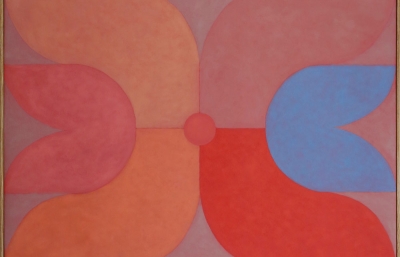

![FAILE: A Riot of Existence @ [CONTAINER], Santa Fe image](/media/k2/items/cache/0353ec718912f4e3bf099e692e0a54be_M.jpg?t=1731963821)
